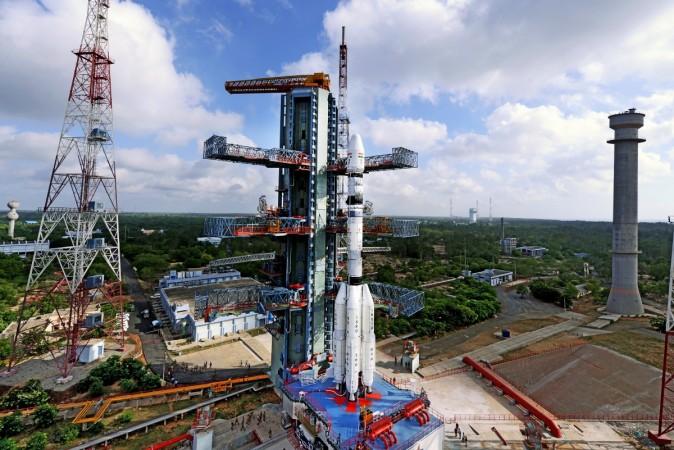
The Indian Space Research Organisation (ISRO) launched an advanced weather satellite 'INSAT-3DR' through rocket GSLV-F05 from the second launch pad of the Satish Dhawan Space Centre at Sriharikota in Andhra Pradesh at 4.50 p.m. on Thursday.
The launch, which was scheduled to take place at 4.10 p.m., was delayed by 40 minutes due to an anomaly detected while filling the cryogenic engine with propellants.
The success of the Geo-synchronous Satellite Launch Vehicle (GSLV), which weighs around 415 tonnes and is 49 metres high, is important for India because it will be used to launch Chandrayaan-2, the country's second mission to the moon, next year. It will also magnify the efforts to break into the multi-billion dollar commercial space launcher manufacturing market.
This is the 10th time that the GSLV-F05 was launched into the orbit. It consists of an indigenous cryogenic engine and is designed to carry satellites weighing 2-2.5 tonne in geostationary orbits. However, it is the first operational launch of the rocket that is carrying the indigenous Cryogenic Upper Stage for the fourth time.
The previous GSLV-D5 and GSLV-D6 missions that were carried out in January 2014 and August 2015 respectively were a huge success. Thursday's launch will see India's own cryogenic engine graduate from the test phase to the operational phase.
However, the GSLV rocket has a quite unimpressive record with the failure of five of its nine flights.
INSAT-3DR, which weighs 2,211 kg and has an eight-year operational life, will first be inserted into a geo-transfer orbit by the rocket during lift off of around 36,000 km above the Earth. The satellite will use its own propulsion systems to reach its designated geosynchronous orbit. It consists of modern instruments that can study weather patterns and help in search and rescue operations at the surface-level using the special search and rescue transponder.
The special feature of this satellite is that it is configured with an imaging system that is capable of taking pictures at night.
The total cost of the launch is believed to be Rs. 400 crore.
#WATCH ISRO launches GSLV-F05 carrying advanced weather satellite INSAT-3DR from the spaceport of Sriharikota. pic.twitter.com/YeCi2S20tu
— ANI (@ANI_news) September 8, 2016
ISRO launches GSLV-F05 carrying advanced weather satellite INSAT-3DR from the spaceport of Sriharikota. pic.twitter.com/Xp5FkcTAOG
— ANI (@ANI_news) September 8, 2016

















